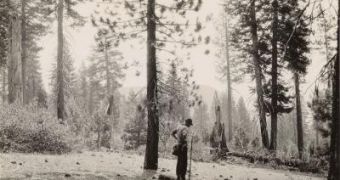A team of researchers from the University of California, Davis, have conducted a study that contradicts the popular belief that plants move uphill as the temperatures become warmer.
Most forecasts say that climate change will determine many plants and animal species to migrate and eventually become extinct.
These predictions are based on the assumption that the main factor of species distribution is temperature, but this new study claims that there are other factors that could prove just as important.
Jonathan Greenberg, an assistant project scientist at the UC Davis Center for Spatial Technologies and Remote Sensing, talks about precipitation as the key element, and explains that water resources are more likely to define the habitable range of certain species.
He explains that between 1930 and 2000, instead of colonizing higher grounds to maintain a constant temperature, many California plant species moved downhill an average of 260 feet.
“While the climate warmed significantly in this period, there was also more precipitation.
“These wetter conditions are allowing plants to exist in warmer locations than they were previously capable of,” he said.
The authors explained that since there are many locations, north of 45 degrees latitude on the globe, that had increased precipitations last year (like the northernmost United States, all of Canada and Russia, and most of Europe), it is very likely that this trend will continue.
Greenberg said that “as we continue to improve our understanding of climate-change impacts on species, we will help land managers and policy makers to make more informed decisions on, for instance, conservation efforts for threatened and endangered species.”
The researcher reminded the importance of an investment in basic science, and said that these results are based on historical data collected by the US Forest Service in the 1930s, as part of a program that was supported by New Deal spending after the Great Depression.
The study is published in the journal Science.

 14 DAY TRIAL //
14 DAY TRIAL //